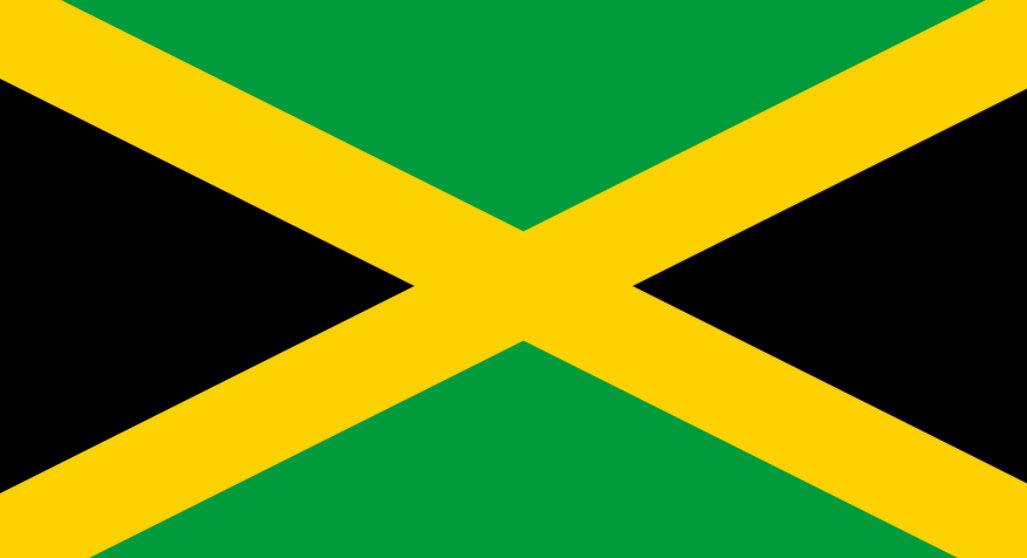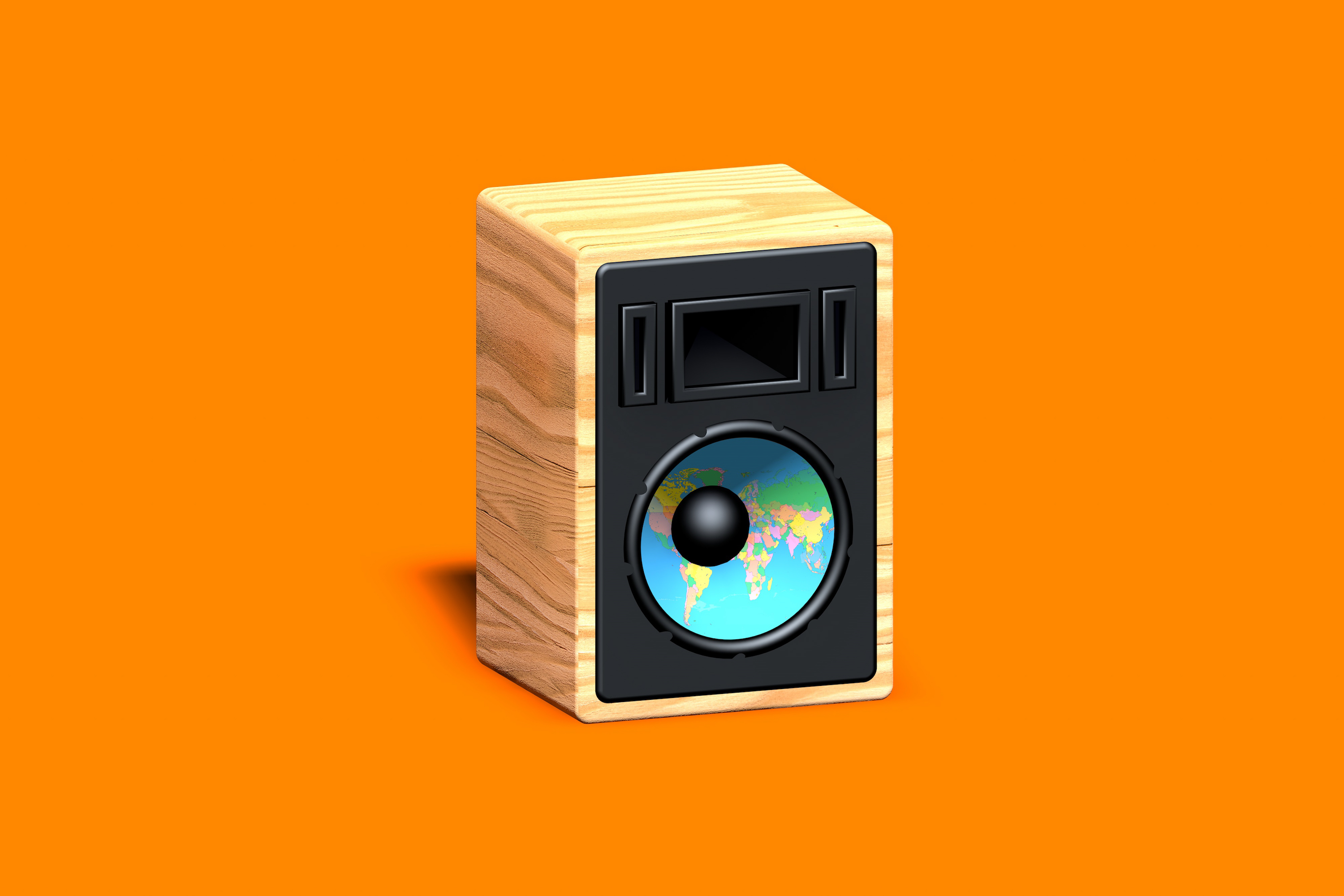Hedley Jones: The Renaissance Man Who Pioneered Jamaican Soundsystem Culture
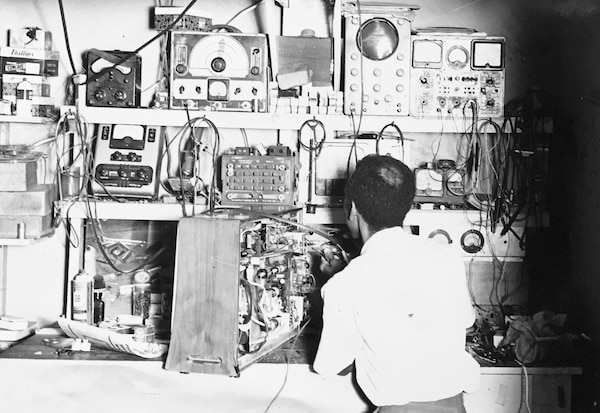
From designing his own telescopes to Jamaica’s first streetlights, the serial inventor solidified his place in the country’s music history by being the first to build soundsystem amplifiers
It’s August 2016 and the antiquated resort, lost in the hills towering over Montego Bay, Jamaica, exudes an eerie feel. Once a splendid and bubbling colonial-style establishment frequented by the Jamaican elite, it sits empty most of the time, save for the occasional wedding or function. Outside, the lush vegetation oscillates lazily in the humid, Caribbean wind.
Pulling me away from a reception room entirely decked in dark wood, its owner, Paul, wants to show something. All these years, he said, he has been working on building DIY prototypes of makeshift electric cars – he proudly displays a life-sized one, patched with Bondo and futuristic aluminum extensions, carefully hidden under a tarp. “No photos,” he firmly commands: Paul happens to be renowned in the expanding yet small circle of Jamaican disco geeks, with a handful of his 1970s tunes recently reissued, and no one was really sure whatever happened to this elusive character. But that’s another story.
In the meantime, all these oddities add up. The sublimely outdated, almost ghostly ambiance of the place and Paul’s story only reinforce the dramaturgy of the long-awaited moment to come: meeting Hedley Jones, the first soundsystem amplifier builder in Jamaica, and general inventive pioneer who also designed, from scratch, the first solid body electric guitar on the island, its first streetlights and his own telescopes, and had a hand in engineering Jamaica’s most prominent studios. As it almost inevitably goes, his role in creating early Jamaican music history was, for decades, largely overlooked.
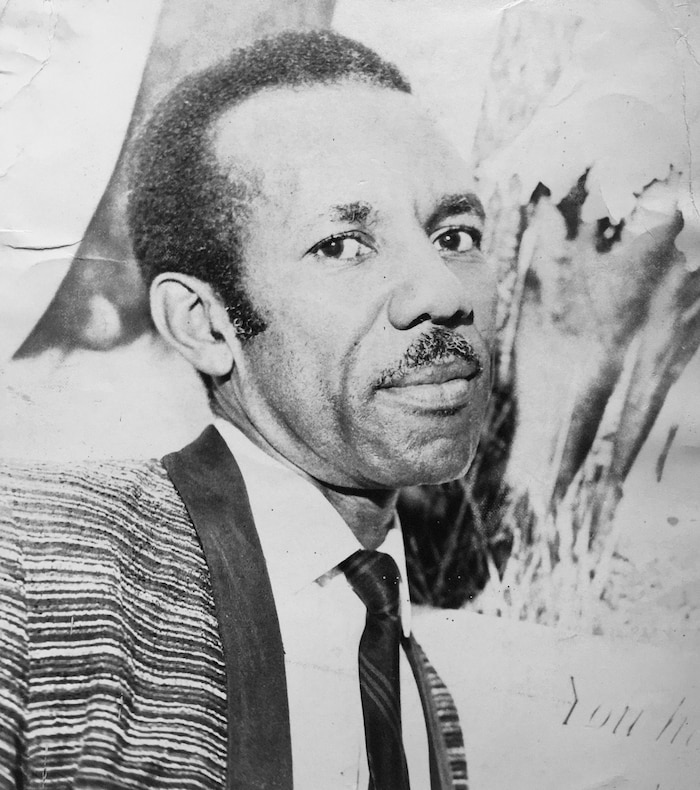
After a wait, Hedley Jones finally arrives. Dressed in an impeccable matching beige outfit, he is accompanied by a full delegation. In what turned out to be his last interview before he passed away on September 1st, 2017, the venerable inventor made a point to make the moment solemn. Half a dozen family members came along, quietly and curiously listening to the conversation (“You really came from France to meet him?”) and nodding at its best moments, their eyes full of love and admiration for the witty Mr. Jones. He introduces himself in a jovial manner: “Hello, I am Hedley Jones, and I am 99 days short of my 99th birthday!”
While some memories understandably mix up at times, Hedley Jones remains sharp, even though he led a life that sounds like fifteen different existences were shoehorned into one timeline.
One of them led him to design the very first soundsystem amps in Jamaica, participating technically in the birth of one of the most important cultural movements of the 20th century, while the Old World was looking away.
It all started because of World War II. “On May 8th, 1943,” he says, “I joined England’s Royal Air Force – until 1962, Jamaica was still a British colony. I was trained as a radar engineer and left Jamaica to go to war in Europe on the 8th of May, 1944. The war was finished on the 8th of May, 1945. And on the 8th of May, 1946, I boarded a boat in Glasgow to return to Jamaica. So that odd thing with May 8ths has followed me up!”
Back home, a new trade came to him naturally. “The radar thing had to do with waveforms. And all waveforms have the propensity for being heard, if you have the proper equipment to transform them into something acoustic,” he says. Right after WWII, the machine that turns audio waveforms into sound invaded homes worldwide: it was called a radio. A fascinated Jones went on to open a radio repair business in 1946. “As an aid to rehabilitation, we were given a choice between obtaining a two-acre plot of land in the parish of Trelawny or a repayable loan of fifty pounds,” he detailed in a paper written for Caribbean Quarterly, Vol. 56, No. 4 (2010). “I selected the latter option, and in collaboration with a close RAF buddy, Altamont Edwards, opened an electronic service facility called Premier Radio Service...in Kingston.” When Altamont left, he turned the business into Hedley Jones’ Radio Service and promptly included a record sales department, Bop City.

His first hand-built amplifier came up in 1947, and it served a specific purpose: “I wanted to use the new technology to design a new type of amplifier that would respond to all audio frequencies. I relied on my new acquired knowledge in the Royal Air force, and used that to design my circuitry. I wanted my customers to hear as closely as possible what they would hear if the band was playing in front of them. In those days in Jamaica, there were several bands around, several nightclubs in Kingston. It was the most musical city in the Caribbean, excepting maybe for Havana, Cuba.”
Jones’s intent was not just based on a simple love of high fidelity audio, but was very much business-oriented. “I discovered that it was impossible to import the most popular labels,” he continued in that same paper. “RCA, His Master’s Voice, Decca, Brunswick, Parlophone, Columbia and Capitol were all tied up by commission agents… Fortunately for me, during my sojourn in England, I had become acquainted with some export sources.”
With a murderous selection flooding Bop City’s shelves, the man needed to let their sonic impact known, loud and clear. “For this my record-selling venture, I needed top-class reproduction, so I immediately imported two eighteen-inch English Celestian bass woofers (speakers) and half a dozen of the twelve-inch, heavy-duty variety.”
But the real cornerstone to all this was the custom-built amp he made.
Soundsystems were just a means to an end, something to balance the absence of dancehalls and musicians in the urban areas of post-WWII Jamaica.
“The amplifier, I strictly used to advertise the records I was selling. It sounded unique because, this is strange, but up till then, I knew nothing in the commercial market that had to do with graphic equalizers. I was able to design circuitry that would enhance the low frequencies, the middle frequencies, and the high frequencies as separate entities and remix them. On one particular occasion, I was playing some Charlie Parker, Dizzy Gillespie, Miles Davis, and Perez Prado. There was a gentleman in Jamaica by the name of Tom Wong. He operated a hardware store, and he was the owner of an RCA PA system. On that occasion, he had a dance to play for at one of the lawns in Kingston known as Jubilee Tile Gardens. It was opposite to my place.”
Jones pauses. He tastes the exact instant when he started playing Perez Prado records from across the street. “In Jamaican parlance,” he playfully grins, “that flopped Tom’s dance.”
A few days later, Wong showed up at Jones’s shop, cash in hand. “So, I built that amplifier for Tom. He promptly called it a Sound System. That’s where the name derives from: he called it a soundsystem. From there on, there was this innovation, the Jamaican Sound System. My third apprentice, Fred Stanford, very witty type of a fellow, he’s the one who nicknamed Tom Wong ‘Tom the Great Sebastian,’ [a nod to the star trapezist the Great Sebastian, from the hugely successful 1952 Cecil B. DeMille movie, The Greatest Show on Earth]. Tom was the first legitimate soundsystem.”
It didn’t take long until a next customer showed up in line. This time, it was a salesman for the D&G brewing company by the name of Roy Johnson, who gladly used the term “House of Joy” to name his rig – freshly coined by the ever-trustful Stanford.
As the idea of soundsystems as a form of musical expression spread through Jamaica, Jones and his apprentices – following Fred Stanford was Jacky Eastwood, who ended up working with Coxsone Dodd at Studio One – started getting busy on the initial set of amps for Duke Reid. Besides also finding the “Trojan” nickname for Duke Reid, according to Jones, Fred Stanford became Reid’s sound engineer after he left his master, before migrating to New York in 1962.
“My chief apprentice had become my chief competitor,” Jones notes, before enumerating again to get his point clearly across: “So it was Tom the Great Sebastian, Roy Johnson and Duke Reid that I built. In that order. Coxsone Dodd’s Downbeat was fourth or fifth. Probably fifth, because I remember building one for someone in between who then recommended me to Sir Coxsone.”
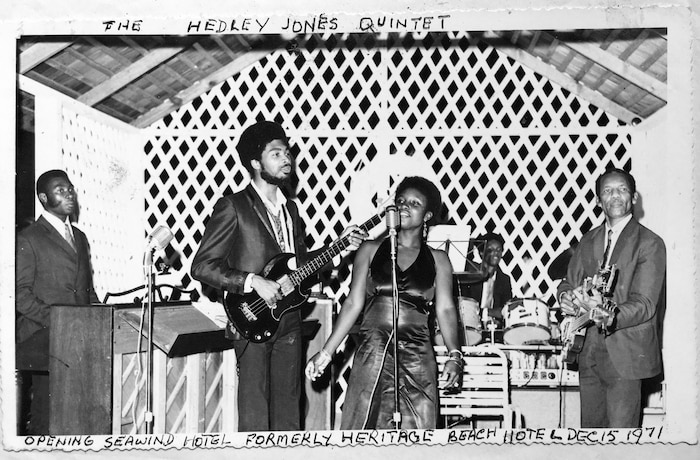
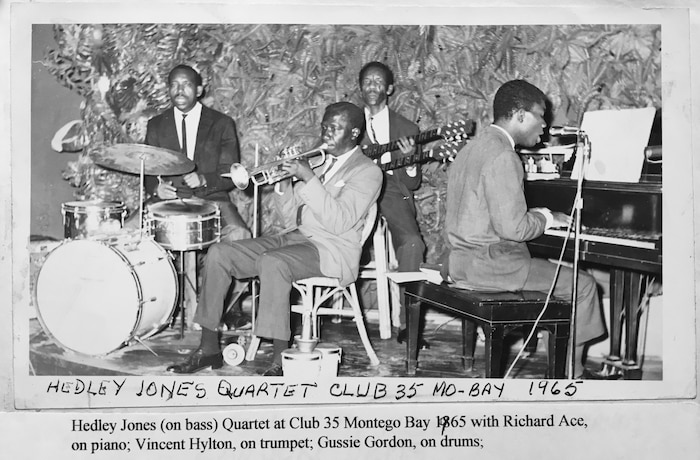
At first, he reminisces, the whole thing was far from a tidal wave. Soundsystems were just a means to an end, something to balance the absence of dancehalls and musicians in the urban areas of post-WWII Jamaica. Those who didn’t migrate to go rebuild England replaced the migrants, and anyone able to hold an instrument was more or less recruited to go and play mento or “Jamaican folkloric music” in the hotels of the North Coast’s budding mass tourism industry – Jones being no exception. Because before turning into an engineer, the man was born a musician.
At 14, he built his own cello and banjos, then proceeded to move to Kingston in 1935 to be a tailor, a cabinet maker, a bus conductor, a newspaper proofreader and a Mr. Fix-It of all trades, from sewing machines to radios to gramophones. But his thing was music at large, and jazz in general. From being the banjoist in a local band, he eventually formed the Hedley Jones Sextet, touring all the lush, Ian Flemming-esque clubs of the North Coast, and moved to guitar after he built his own. This was the first solid body electric guitar in Jamaica, produced the same year Les Paul came up with his own, in 1940.
“The first one in Jamaica,” Jones carefully stresses, after the recent unearthing of a Gleaner article from 1940, and the internet frenzy that ensued , could have made it sound like Les Paul might as well have bootlegged his.
In true David vs. Goliath fashion, the story would have been perfect. But let’s set the record straight once for all with ethnomusicologist Dr. Ray Hitchins, the Coordinator for the Entertainment and Cultural Enterprise Management program at The Institute of Caribbean Studies at University of the West Indies, and author of Vibe Merchants: The Sound Creators of Jamaican Popular Music: “The solid body electric guitar is widely recognized as being the 1935 Rickenbacker Model B Spanish model, which Jones’ first Jamaican made instrument is similar to in design, construction and size (See writings by George Gruhn, Richard Smith and in ‘Music and Technology In The Twentieth Century’ by Hans Joachim Braun, 2000),” he pointed in an email interview. “Gibson also registered a similar solid body design at the US patent office in 1936. In a Rebecca McSwain article, she also discusses how the first experimentation for guitar pickups was based on telephone transducer technology in the late 1920s, a claim that Jones also makes! The Hawaiian instruments, based on [newspaper The Jamaica] Gleaner reports from the 1930s and ’40s, were popular in Jamaica and I could imagine that Jones, who was working for a Jamaican newspaper in the ’30s, saw an article on the instrument and decided to version it.”
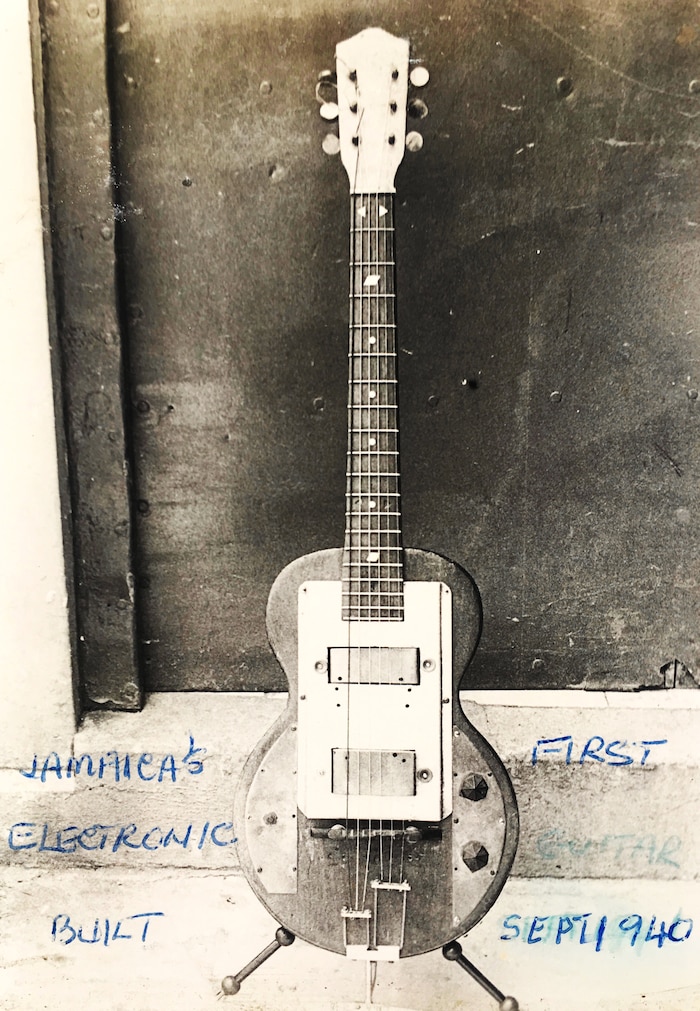
Regardless where Jones’ initial inspiration came from, his guitar impressed a few people. “That was the very beginning of a new musical career, because I was commissioned to do guitars for several bands that operated in Jamaica at that time. For instance, the Expeditionary Band of the USA that had established a branch of the US Army here in Clarendon had a band, but they didn’t have an electric guitar, and they ordered one from me.”
And then came World War II, and radars, which meant diving deeper into electronics. Yet when Jones came back to the island, playing innocuous music to tourists still sounded like more of a career than soldering circuitry to amplify music. This was especially true since locally crafted soundsystem gear, albeit easier to source, didn’t yet lure every aspiring soundman on the island.
Such was the case with Merritone, Jamaica’s longest continuously running soundsystem that started in 1950. Following the passing of its historical selector Winston Blake, his brother Monte still runs tunes today, well into his ’70s. Caught right before the weekly night that Monte still holds at the white-curtained club Waterfalls in Kingston, his take on the Hedley Jones case is enlightening because it shows how the early pioneers thought – not necessarily “locals first.”
“See, at the time,” Monte nods, “soundsystem was mostly found in… I don’t like to say this, but I’m going to say it anyway… Middle class people, of which we were, didn’t go to soundsystem dance. They went to see bands. But our dad turned out to be a big DJ. He loved it. In those days, there was no Jamaican music. Before 1960, 1962, we’d play Latin American music, like from Cuba, or meringue, rhythm and blues. And we played a lot of country and western, and a lot of slow love songs. Even Frank Sinatra and stuff.”
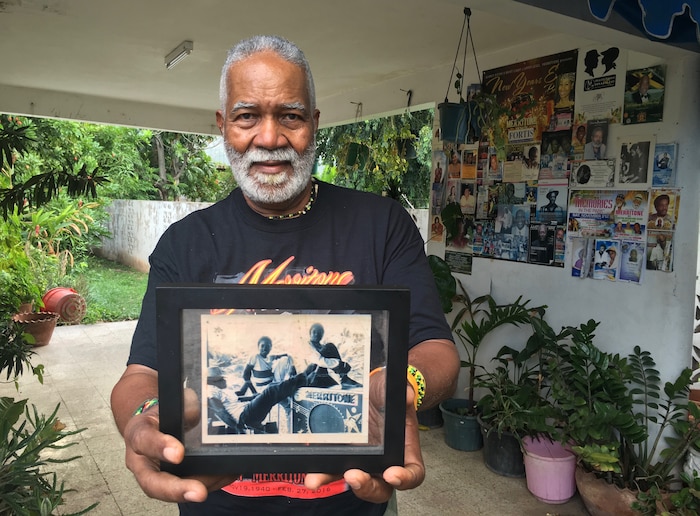
With such a position in the social scale and the genres of music being played, Merritone didn’t fall for Jones’s amp. “My father opted for a more refined sound,” Monte explains. “He went for the European sound. The amplifier and speakers that he used were by Phillips of Holland. It didn’t have that heavy sound. It was more melodious and, you know, easy on the ear.”
Undeterred, Jones was in the meantime extending his craft from guitar and soundsystems to a whole other beast: actual studios. Namely, Studio One, where he was initially brought in for guitar work, back when producer Coxsone Dodd didn’t have his own studio and took advantage of afterhours sessions at national radio station JBC.
As memories tend to blur, and with many people involved now dead, it is difficult to know who did what in building Studio One on Brentford Road in 1963. “[Sound engineer] Graeme Goodall, who had a central role in the early Jamaican music industry,” Ray Hitchins says, “said that Gene Finzy had wired the first Federal Studio and to my recollection had assisted Dodd when Studio One was being considered. Goodall informally acted as an advisor to both Dodd and Reid when they were building their studios, providing them with some equipment and advice on mics, etc… A studio installation is quite a specialist task dealing with issues of grounding, etc… which are surprisingly complex, using protocols that most electronics people would not be aware of. Also, room treatment would have been a specialist job.”
All of this is to say that building Studio One could never have been a one man operation, and was moreso a heavily, multi-craft collaborative task that unfolded over years. Jones did build, he says, “the amplifiers – both for sound and recording. All he had was an Ampex reel tape, studio type. I had to build several channels. The amplifier I built had seven inputs. I designed it so that there could be one for vocals, one for the rhythm section, one for piano, one for drum, one for vocals, and one for speech, and all that. Using the same technologies that I told you I have in the rough.”
There’s a mandatory technical pit stop here, courtesy of Hitchins: “When he describes an amplifier with seven inputs, is this what we now call a mixing console?” he wonders. “Which would be strange, since Coxsone always confirmed that his first mixing desk was a Lang…” Hitchins should know: He purchased it off the producer in the 1990s, as Coxsone was about to dump it. “Mixing consoles by definition are not amplifiers but preamps. Is it possible that he was involved with trying to build a console for Dodd, who then decided to purchase the Lang? Who knows?” Hitchins questions, evoking Churchill and his famous “riddle wrapped in an enigma” quote.
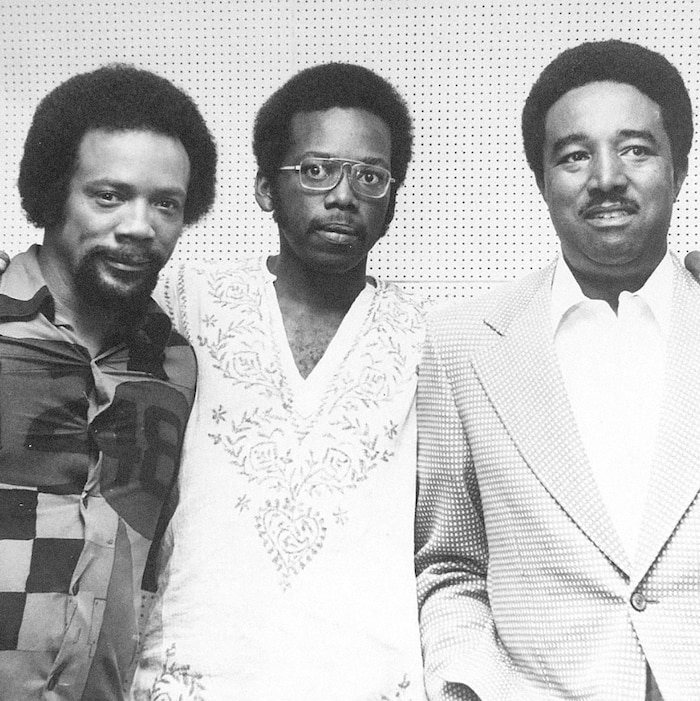
On the tough road to sourcing more firsthand testimony, Hedley Jones did leave a lead before he passed: “My sons, Hedley Jr. and Ron, helped me in that Studio One project. At that time, I was teaching electronics at the Kingston Technical School. That was a part-time job. Hedley Jr. was a student there. He was the one, when I was at school, who was drawing the cables into the conduits.”
I tracked down Hedley Jones Jr. in Los Angeles, where he has been residing and making a living as an audiovisual artist and photographer. He religiously attends the Burning Man festival every year, where his signature top hat/dreadlocks combo gives him prominent recognition. Seeing Hedley Jr., it is hard to believe that such a youthful-looking fellow worked at Studio One “back in the day.” He’s actually 71, but age, Jr. laughs, “is just an illusion.”
“I was 13 when I started Kingston Tech in 1961,” he remembers, “and every day after school I had to go to my dad’s shop, in the building behind what became Studio One. I installed most of the electronics in the original studio and set up the mics for a lot of the early recordings… ‘Simmer Down,’ by the Wailers, I set up the mics for that, and Ernest Ranglin was using my dad’s guitar.”
Following the Studio One install, Hedley Jones Sr. maintained a foot in music, directing the Jamaica Federation of Musicians from 1985 to 1995. But Hedley Sr.’s thirst for all things technology also went far beyond music. From the mid-1960s on, Jones pursued his knack for astronomy.
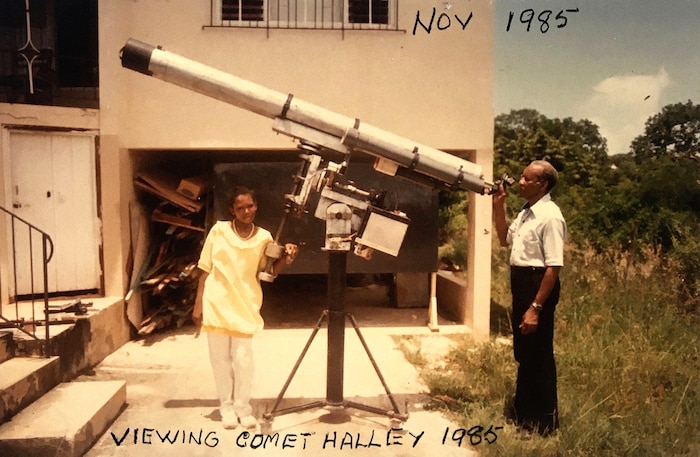
Hedley Sr.’s eyes light up again. “When I was ten, I read a book written by William Pickering, an astronomer from America, that had retired and was residing right here in Jamaica in Mandeville. When I got back to Jamaica from the war and I had this business going, a small telescope was given to me by a photographer in Kingston. I got interested in telescope-building. So I purchased a blank from an engineer friend and started grinding a four-inch mirror. When I left Kingston in 1965 and decided to do some musical work in the tourist industry, as a band leader, that meant more spare time for telescope-building. I succeeded in building a fairly successful four-inch telescope and a very successful six. With the six, I was able to discover pretty early in 1985, the entry of Halley’s Comet,” he triumphs. “But with my eyesight fading, I retired from that about 15 years ago. As a matter of fact, 2001. I was very active as musician up to that point, but the attack on the American buildings there in September of 2001 put the end to my employment in the tourist industry in Jamaica. So I just called it a day to an industry in which I had spent 34 years as band leader.”
Time seems to have stopped at the old Mo’Bay resort, as the afternoon breeze is picking up and shaking the palm trees. Hedley Jones is getting tired, but can’t help but going over and commenting on a heap of old sepia photographs brought by his family. I slowly realized that his hope was not only to be recognized as a pioneering technologist and jack of all trades. Jones was also praying that his personal case, when he would be gone, would by extension increase the perception of his field.
“I don’t know if I would call it my dream, but I was interested in music, so I did something that could make music sound as close to original as possible,” he concludes. “I was interested in the skies, so I built something that could help me see what’s happening up there. But there’s something I must say here. In Jamaica, that sort of approach is not very important to the people in academia. It's sad to say, they do not recognize that as… If I had gone to the university and took a medical course maybe, or became a lawyer, this sort of things are more impressive to a Jamaican academia, not technology. Sure, it’s changing around, a little bit. But all too lately. All too late.”
Header image © Courtesy of Hedley Jones Archive
